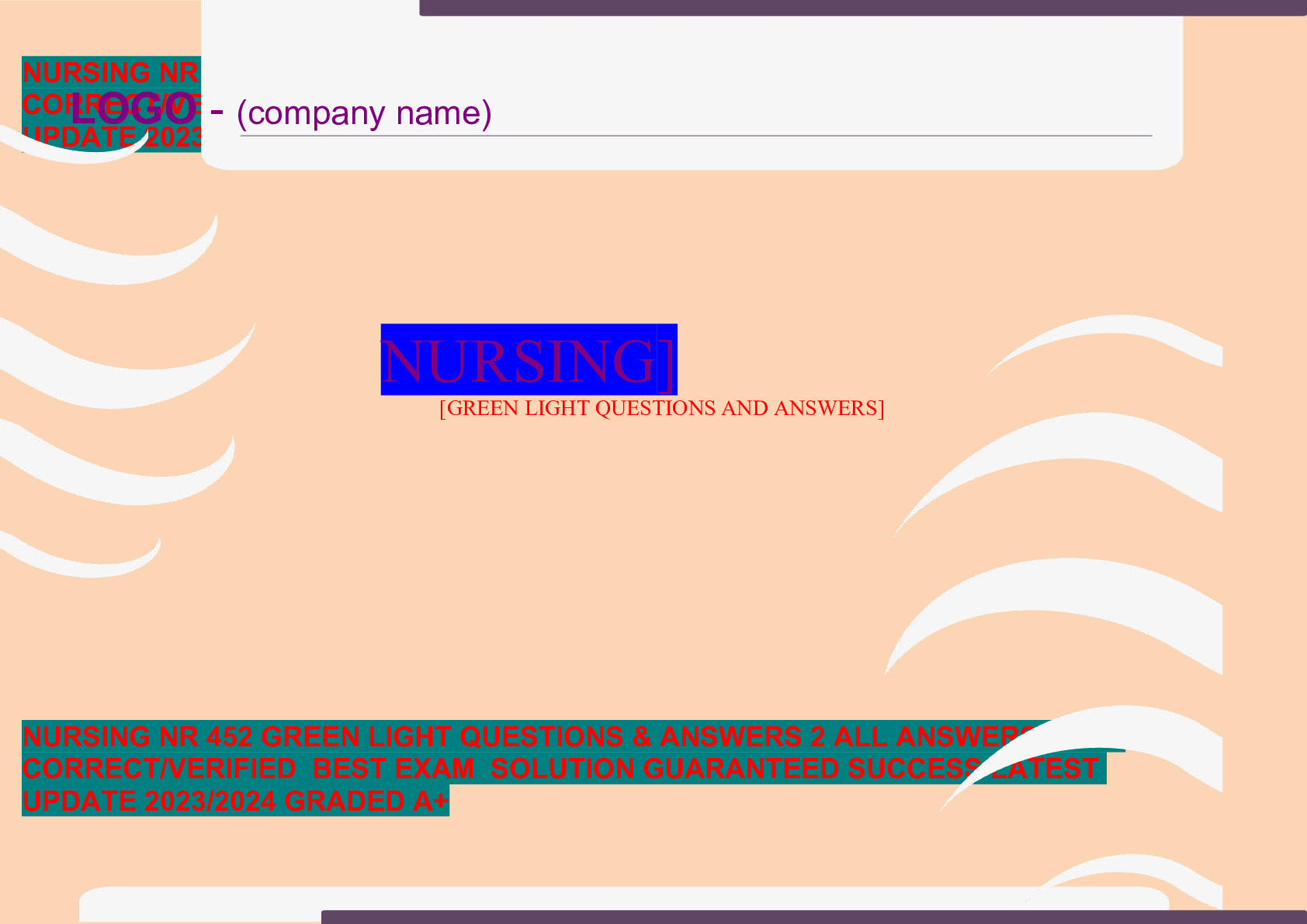*NURSING > QUESTIONS & ANSWERS > NR 603 Week 4 APEA Predictor Exam Review Questions & Answers (All)
NR 603 Week 4 APEA Predictor Exam Review Questions & Answers
Document Content and Description Below
only encountered in up to 1/3 of the patients. The collection of blood between the skull and dura mater causes an evident mass effect with ophthalmic nerve palsy and the contralateral hemiparesis. Sur... gical evacuation of the clot via burr holes is the treatment of choice. Subdural hematoma results from a traumatic rupture of the bridging veins that connect the cerebrum to the venous sinuses within the dura. This venous hemorrhage will result in a gradual increase of the hematoma, with a progressive clinical picture over days or weeks. The CT scan will show a concave, crescent-shaped hyper-density compared to the convex, lens-shaped hyper-density in epidural hematoma. Subarachnoid hemorrhage is the result of an aneurysm rupture; the most common is the congenital berry aneurysm. The clinical picture is of a sudden, severe headache with meningeal irritation. A CT scan will show blood in the subarachnoid space, and a lumbar puncture will reveal xanthochromia CSF. Intracerebral parenchymal hemorrhage is most likely caused by hypertension complicated with Charcot-Bouchard aneurysms. The blood accumulates into the brain substance and most commonly involves the basal ganglia. Acute meningitis is not associated with trauma. Fever and signs of meningeal irritation dominate the clinical picture. Lumbar puncture, indicated if there are no focal neurological signs on clinical examination, will be the diagnostic procedure. The CT scan of the patient presented in this case is characteristic for epidural hematoma, and there is no indication for a lumbar puncture. A 31-year-old woman presents with a purpural rash covering her arms, legs, and abdomen. She also has fever, chills, nausea, abdominal tenderness, tachycardia, and generalized myalgias. Prior to the development of the rash, the patient noted that she had a headache, cough, and sore throat. Laboratory studies were positive for Gram- negative diplococci in the blood, along with thrombocytopenia and an elevation in PMNs. Urinalysis showed blood, protein, and casts. Vital signs are as follows: PB 92/66, P 96, RR 14, T 39. The patient denies any foreign travel and does not have any sick contacts. However, she does work part time as a nurse in a local hospital. Question The patient is diagnosed with Meningococcemia; she is admitted to the hospital and placed in respiratory isolation. What major course of therapy should this patient receive? Answer Choices 1 Steroids 2 Supportive care [Show More]
Last updated: 1 year ago
Preview 1 out of 1 pages
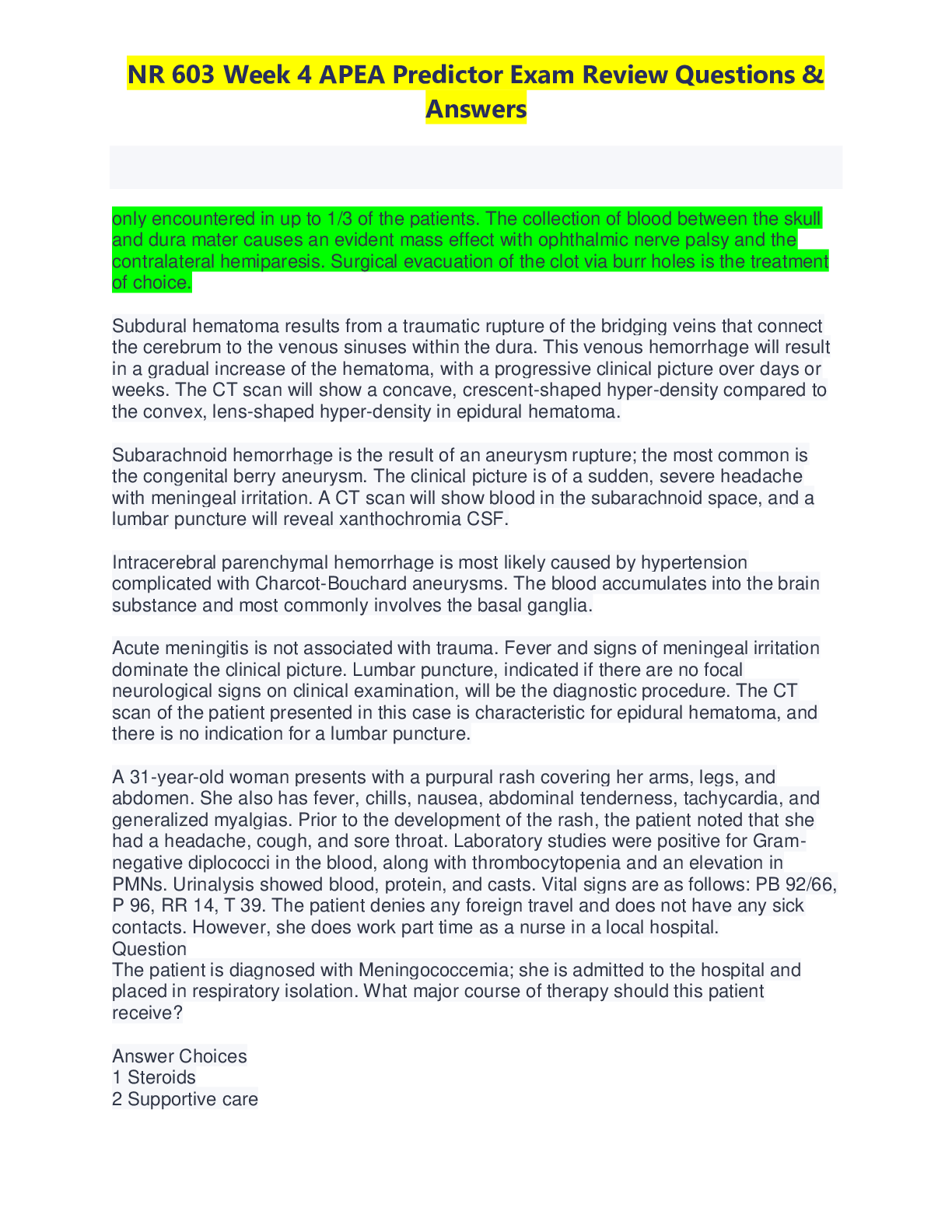
Reviews( 0 )
Document information
Connected school, study & course
About the document
Uploaded On
Mar 08, 2023
Number of pages
1
Written in
Additional information
This document has been written for:
Uploaded
Mar 08, 2023
Downloads
0
Views
56


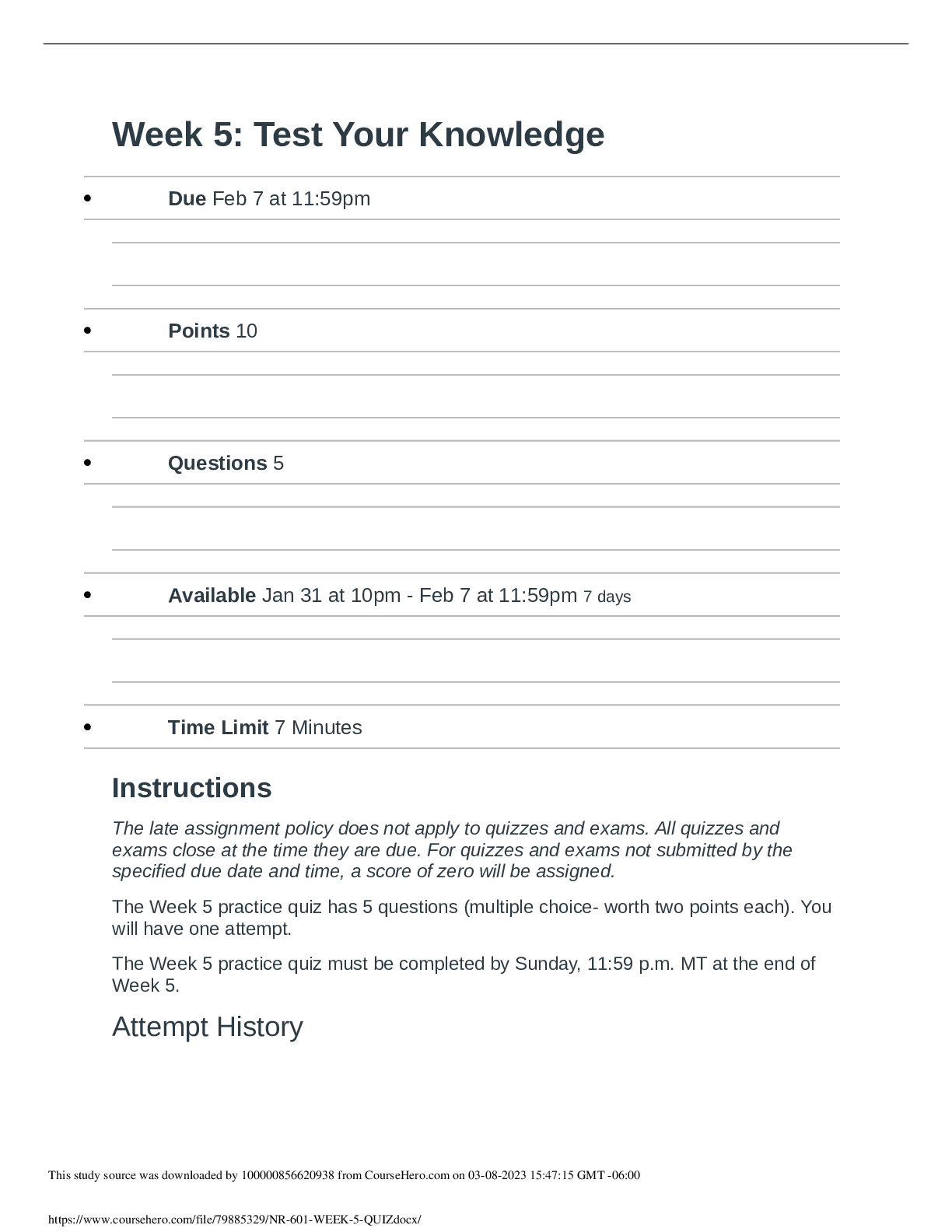
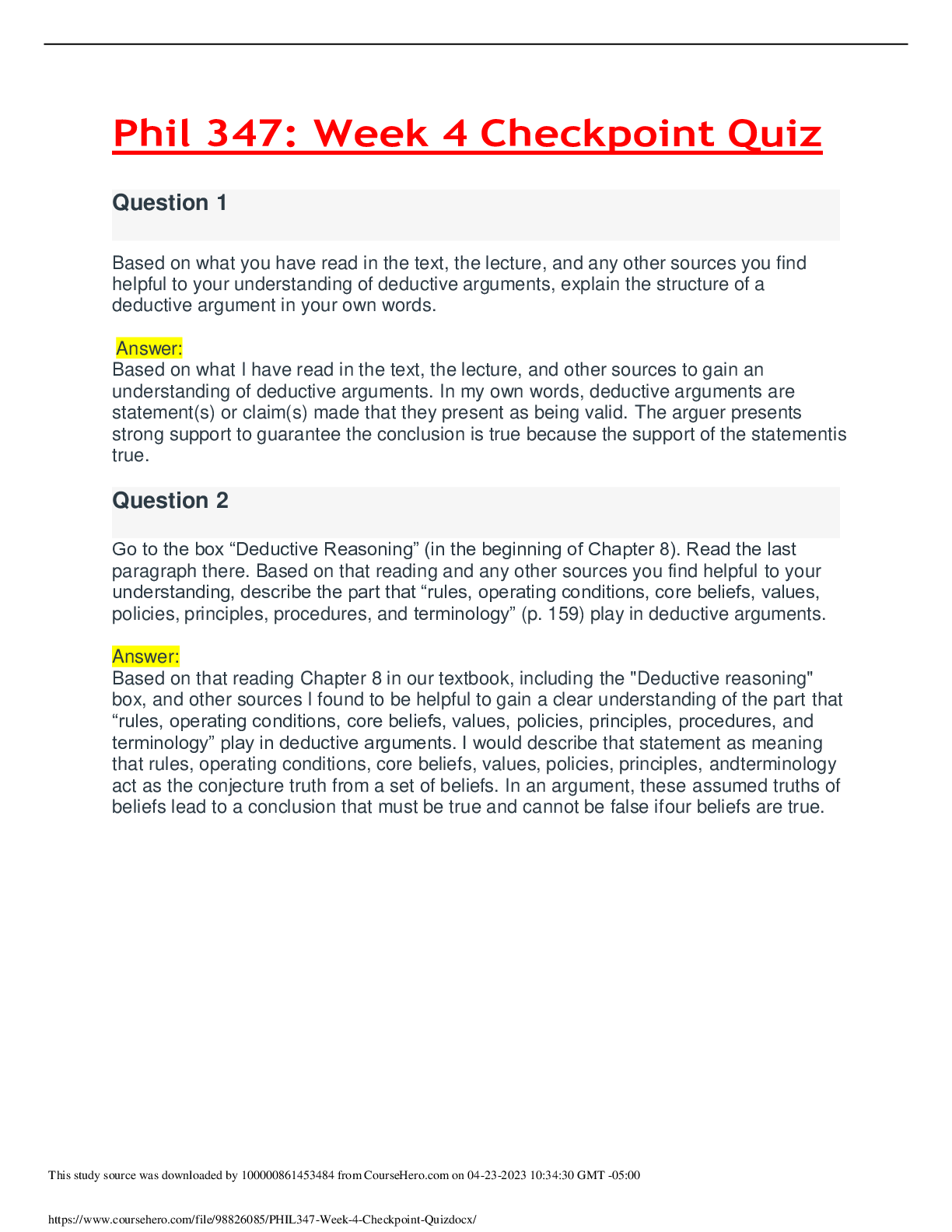


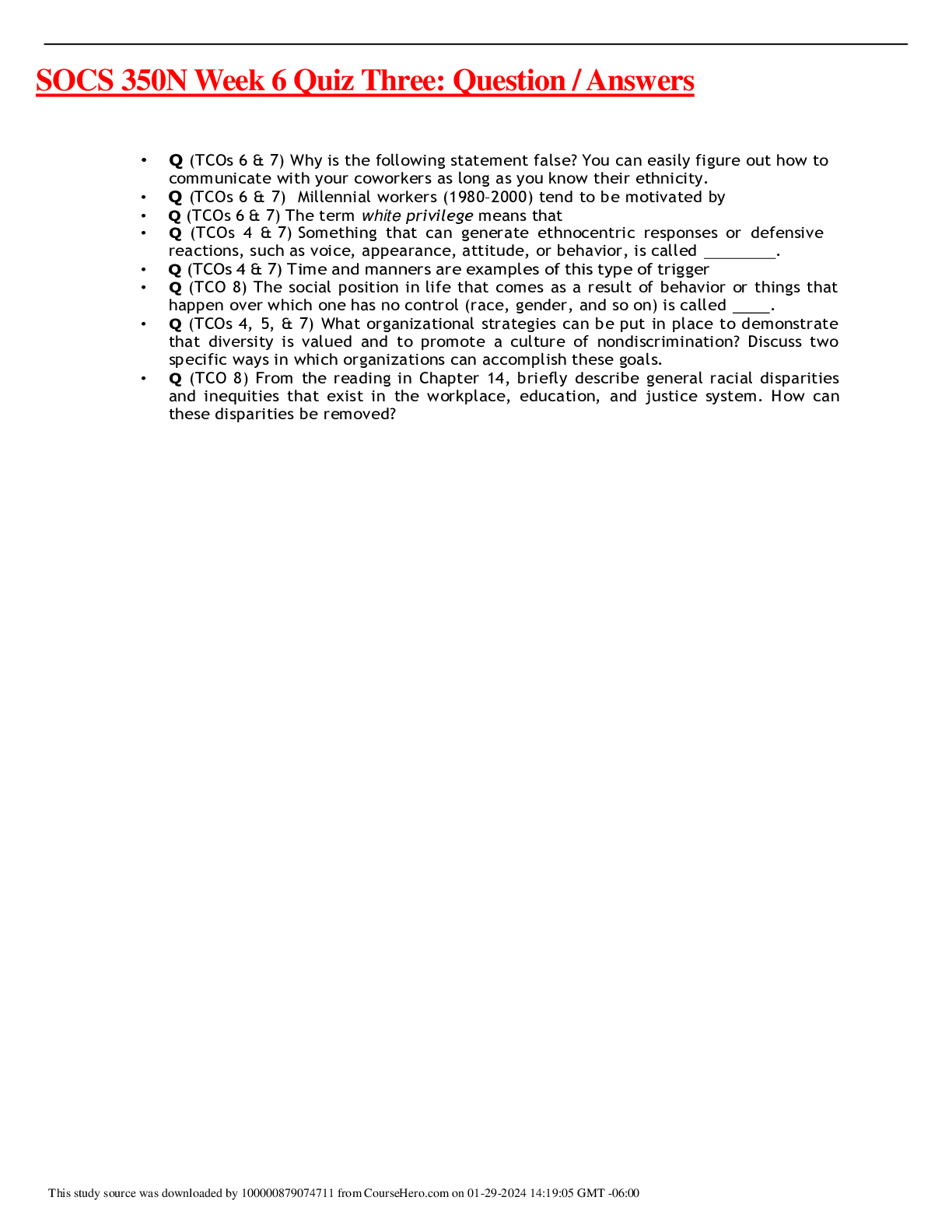


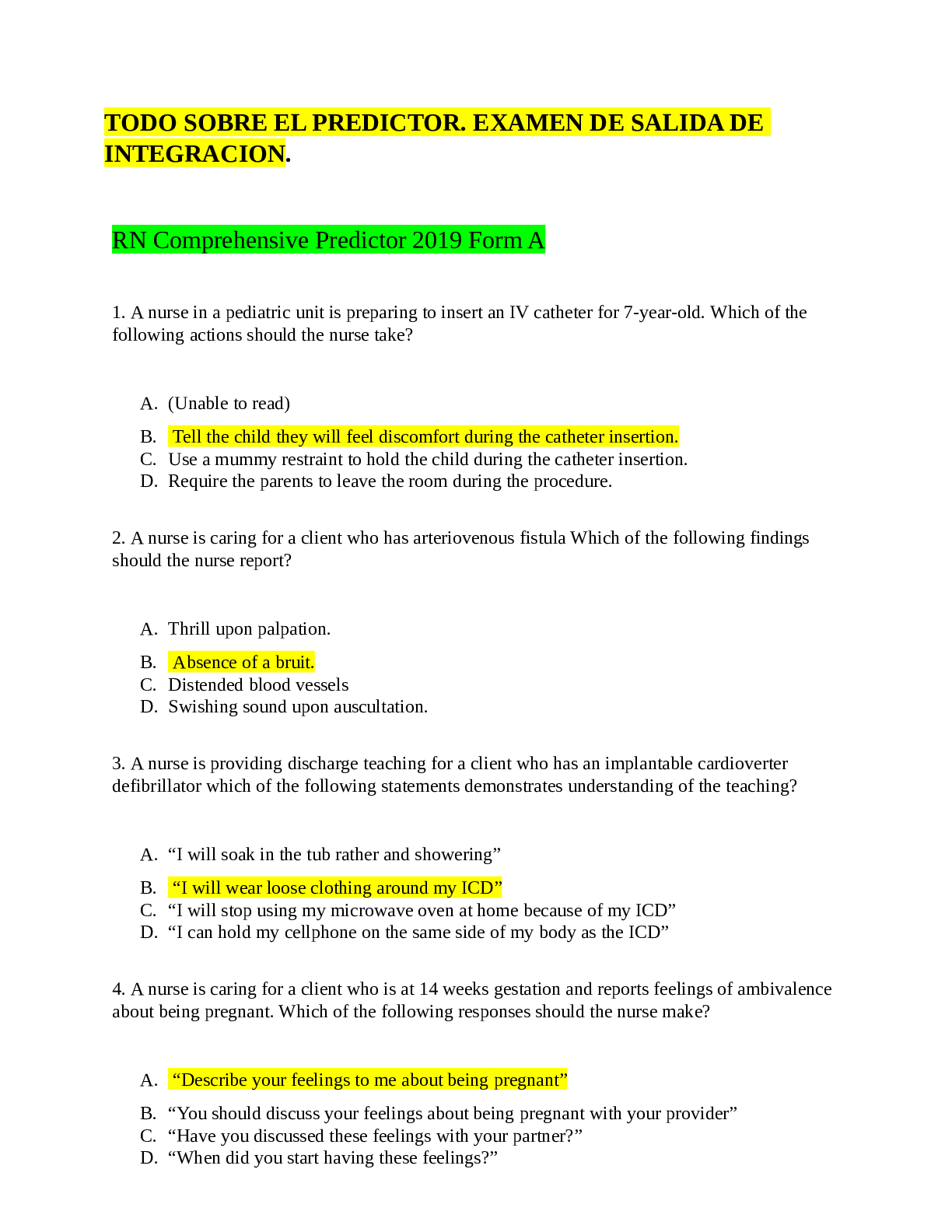

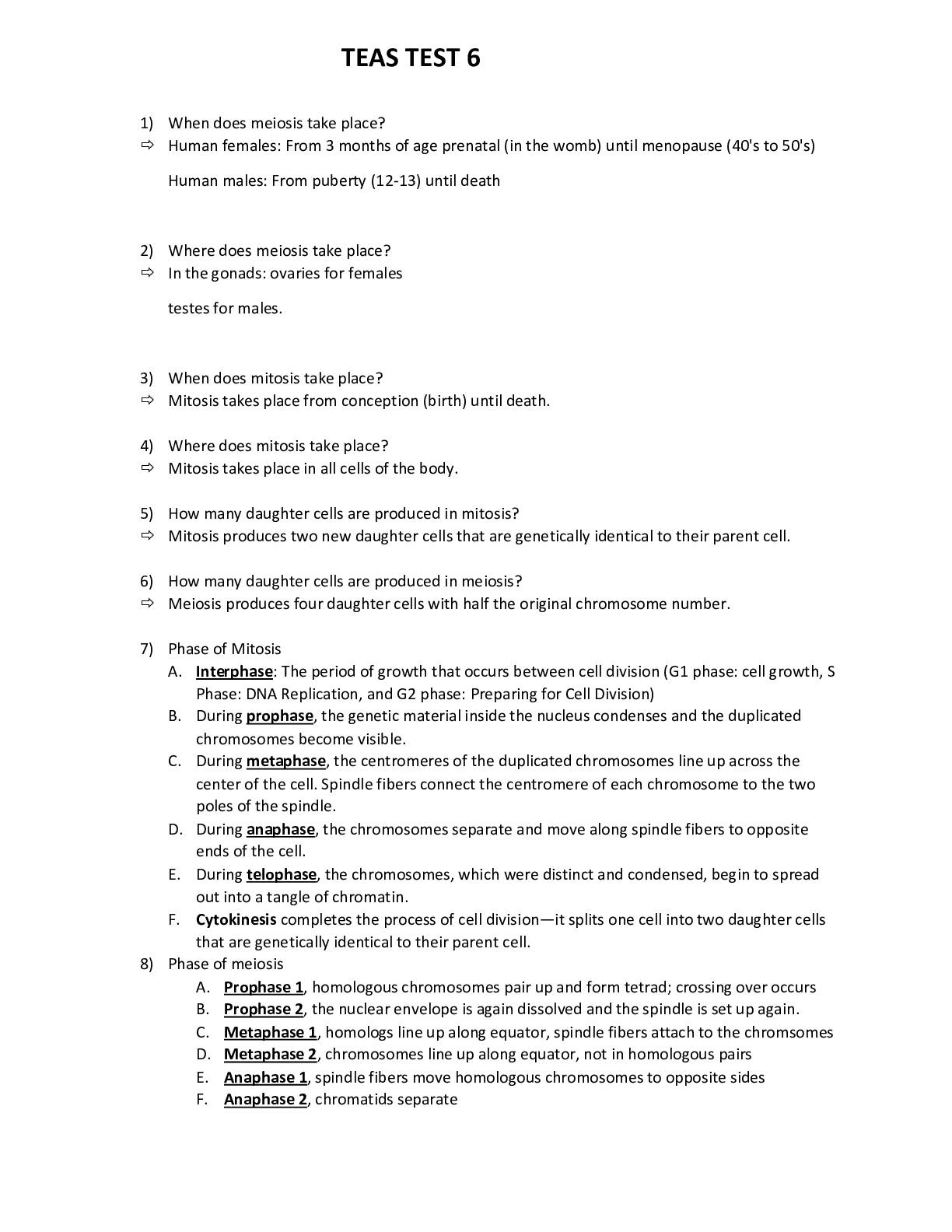
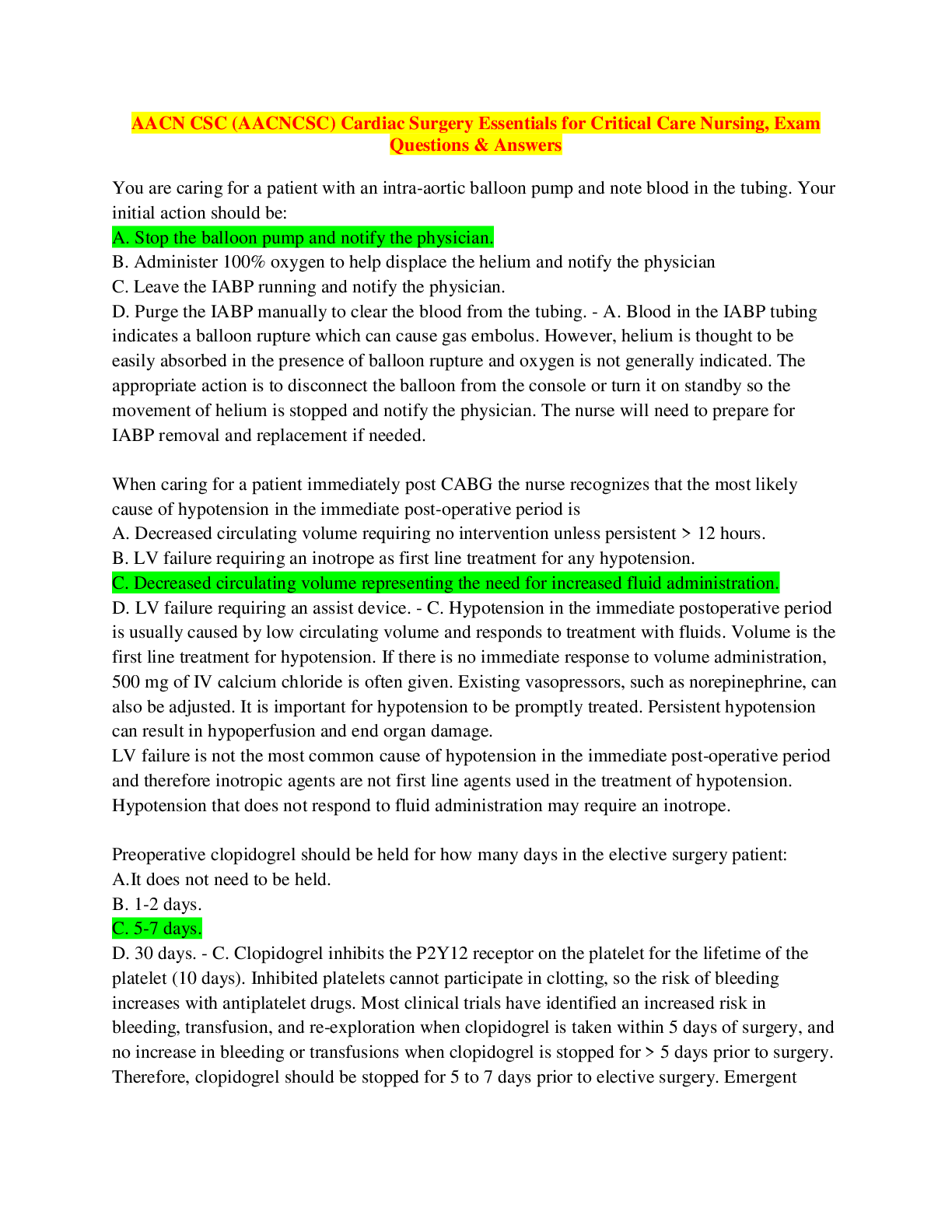
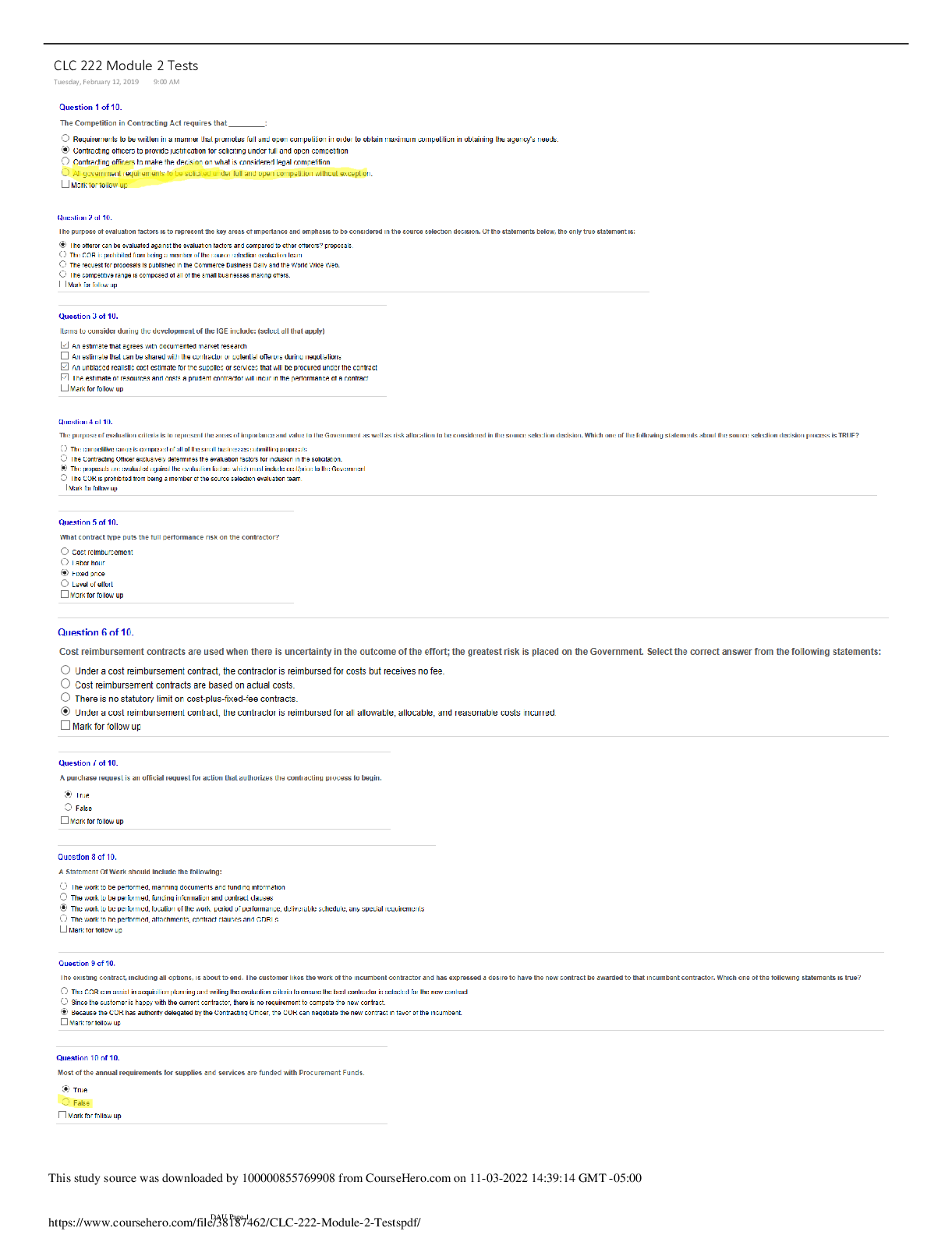

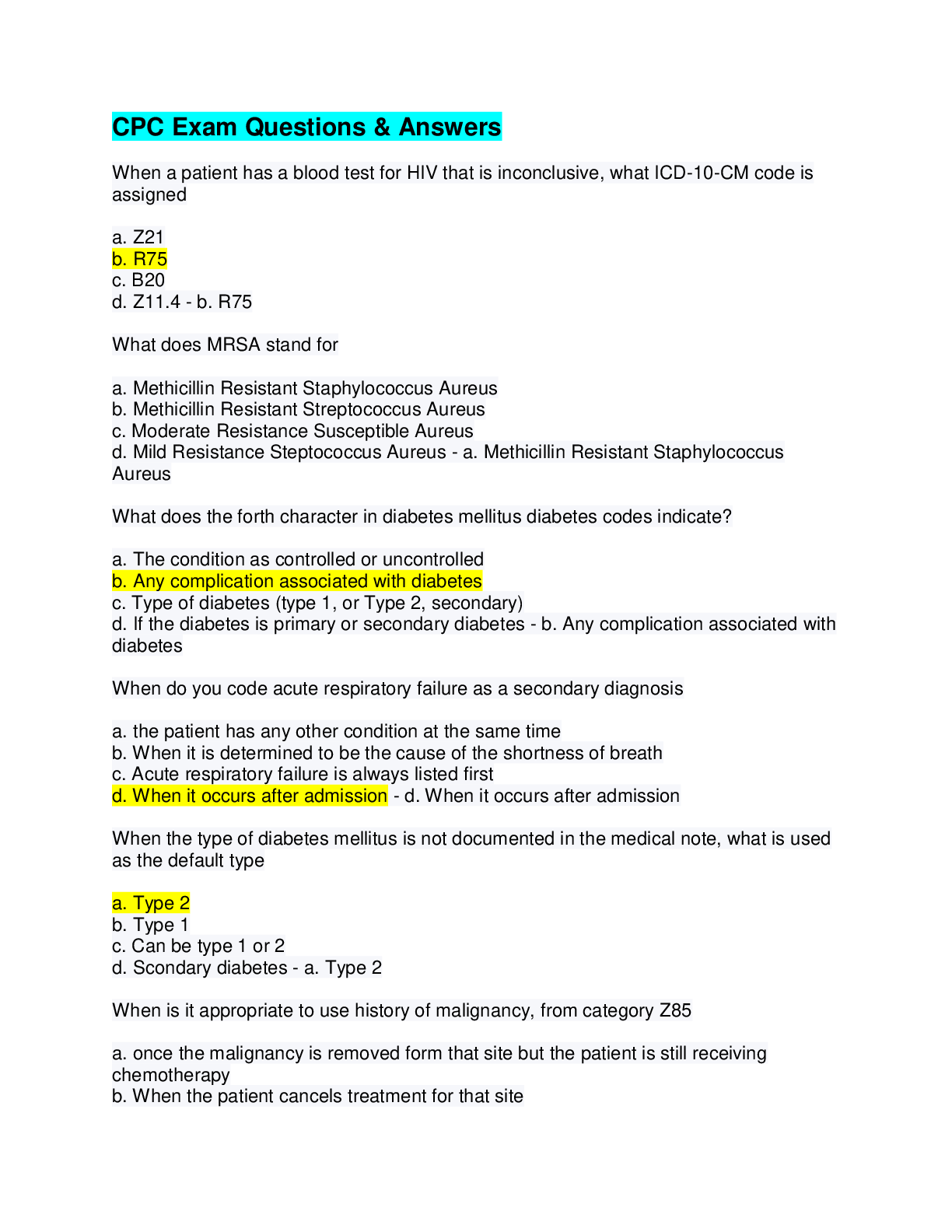

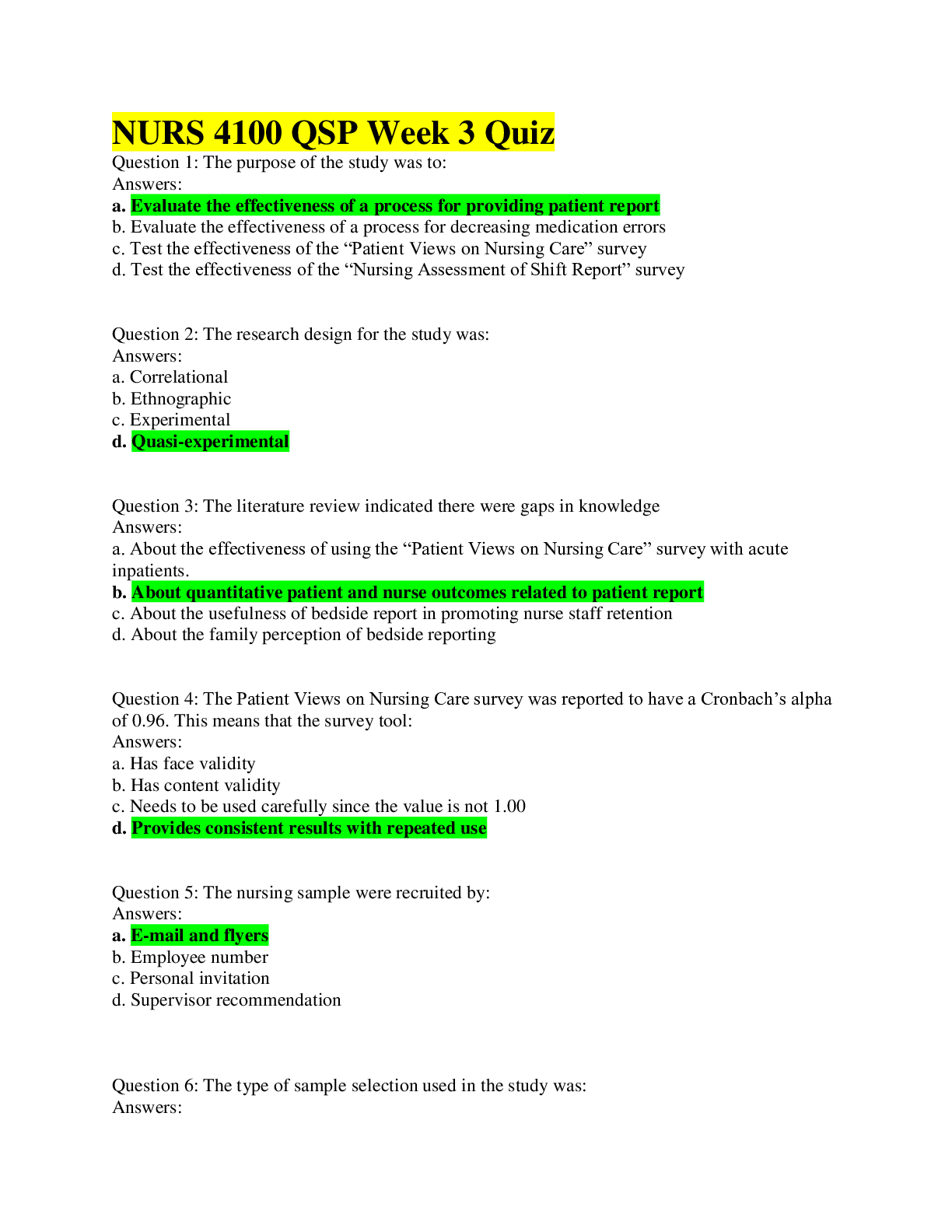
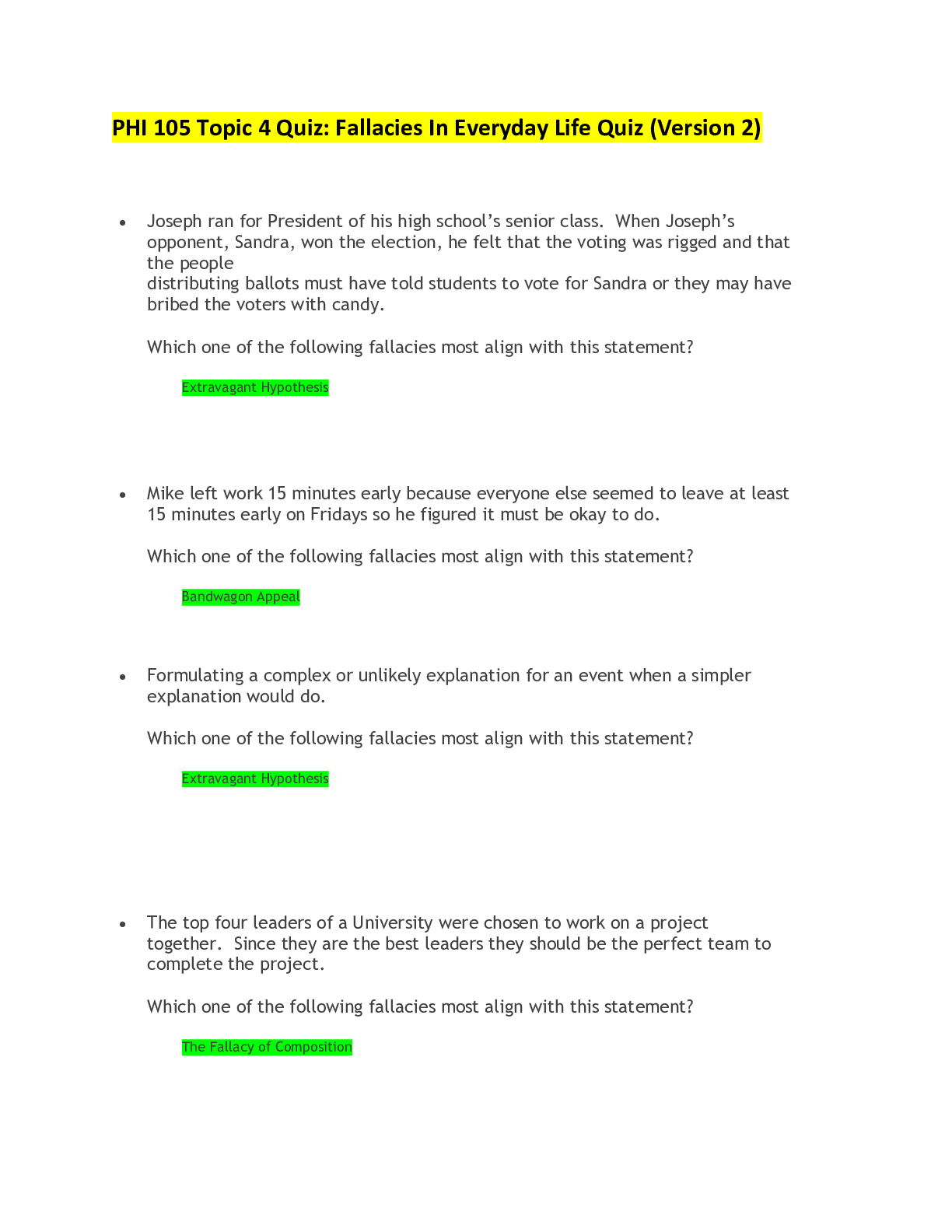
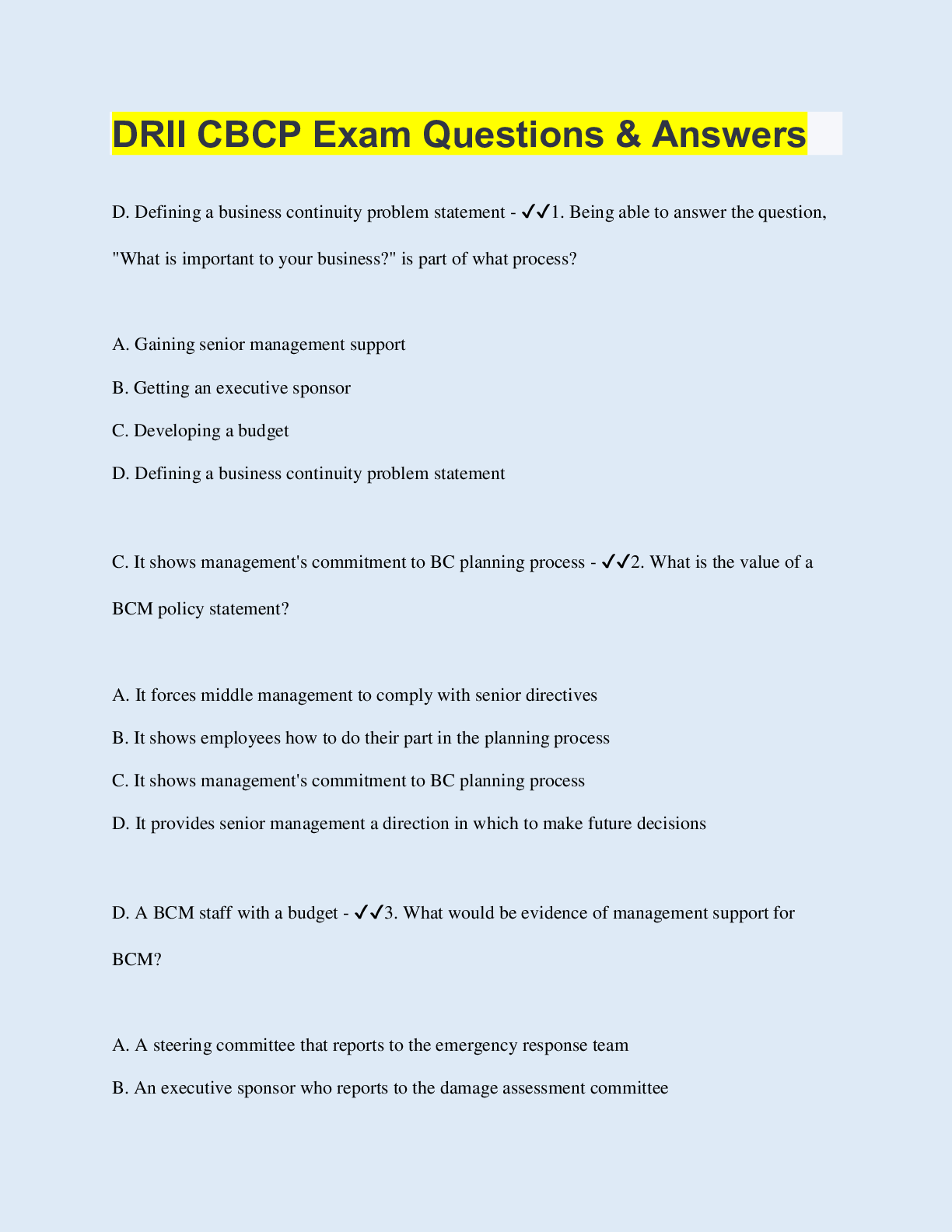
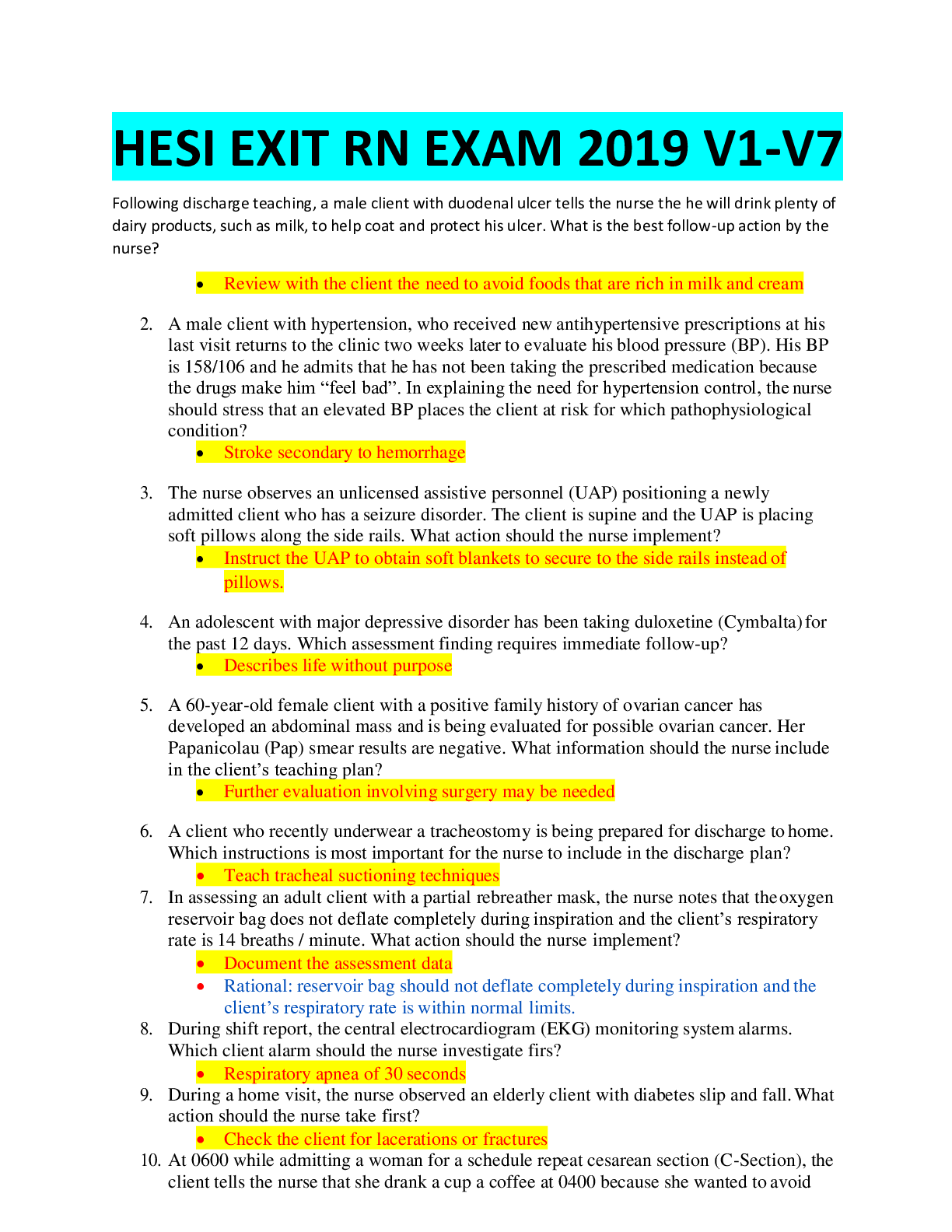
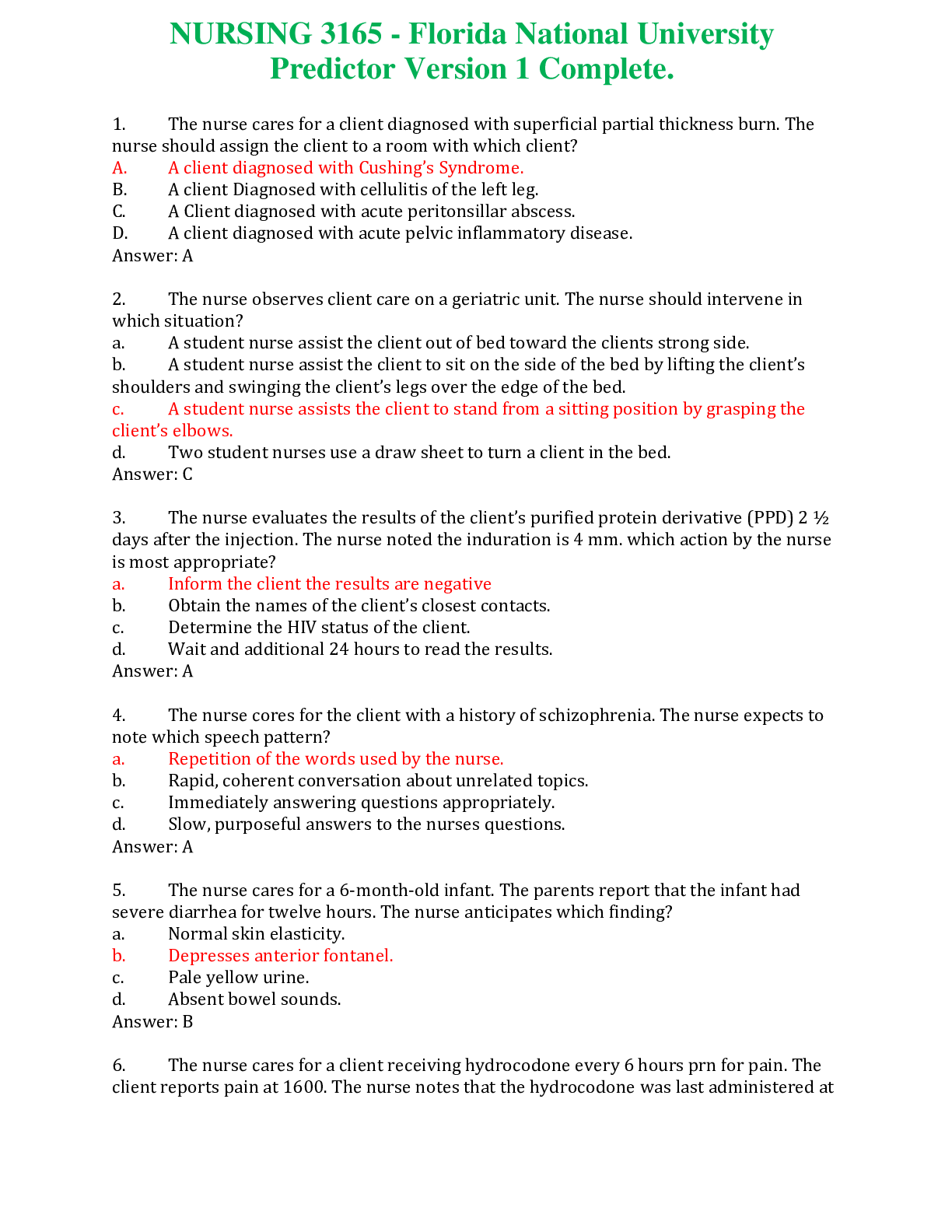
.png)



